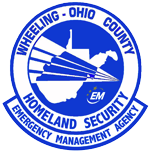

Do you need more time to submit your disaster loan application?
FEMA’s Public Assistance program helps communities recover from disasters. Through Public Assistance, communities can get help covering their costs for debris removal, life-saving emergency protective measures, and restoring public infrastructure. Public Assistance is available to states, local governments, and private nonprofit organizations. Individuals and households with uninsured losses can apply for assistance through FEMA's Individual Assistance program. REMINDER: The deadline to apply for Individual Assistance is Monday, Sept. 22.
Ohio County is included in the federal disaster declaration. Residents can now apply for FEMA help at DisasterAssistance.gov or 800-621-3362. More info soon on local support & deadlines.
How to prepare: Take photos, save receipts, list damaged items. This helps your FEMA application move faster. Apply at DisasterAssistance.gov or call 800-621-3362.
SCAM WARNING: FEMA help is free — never pay anyone to help you apply. Get info only from trusted sites: FEMA.gov & DisasterAssistance.gov. FEMA Fraud Prevention Flyer
For those affected it is important that you register for BOTH the FEMA program AND the Small Business Administration loan.
FEMA Resources
If you wish to have your organization or other helpful information linked on OVFlood.org, please send the specific links to [email protected]. Please do not send specific dates or times, but rather the link to the information.
Sources: https://www.disasterassistance.gov/help/faqs www.fema.gov/disaster/recover/faq
If your home or things were damaged, you may be able to apply for FEMA help:
Official Government Websites and Agencies
Social Media
Tips
Volunteers and Donations
FEMA disaster assistance applications are typically accepted for 60 days from the date of the disaster declaration, but the application deadline may be extended further in some disasters.